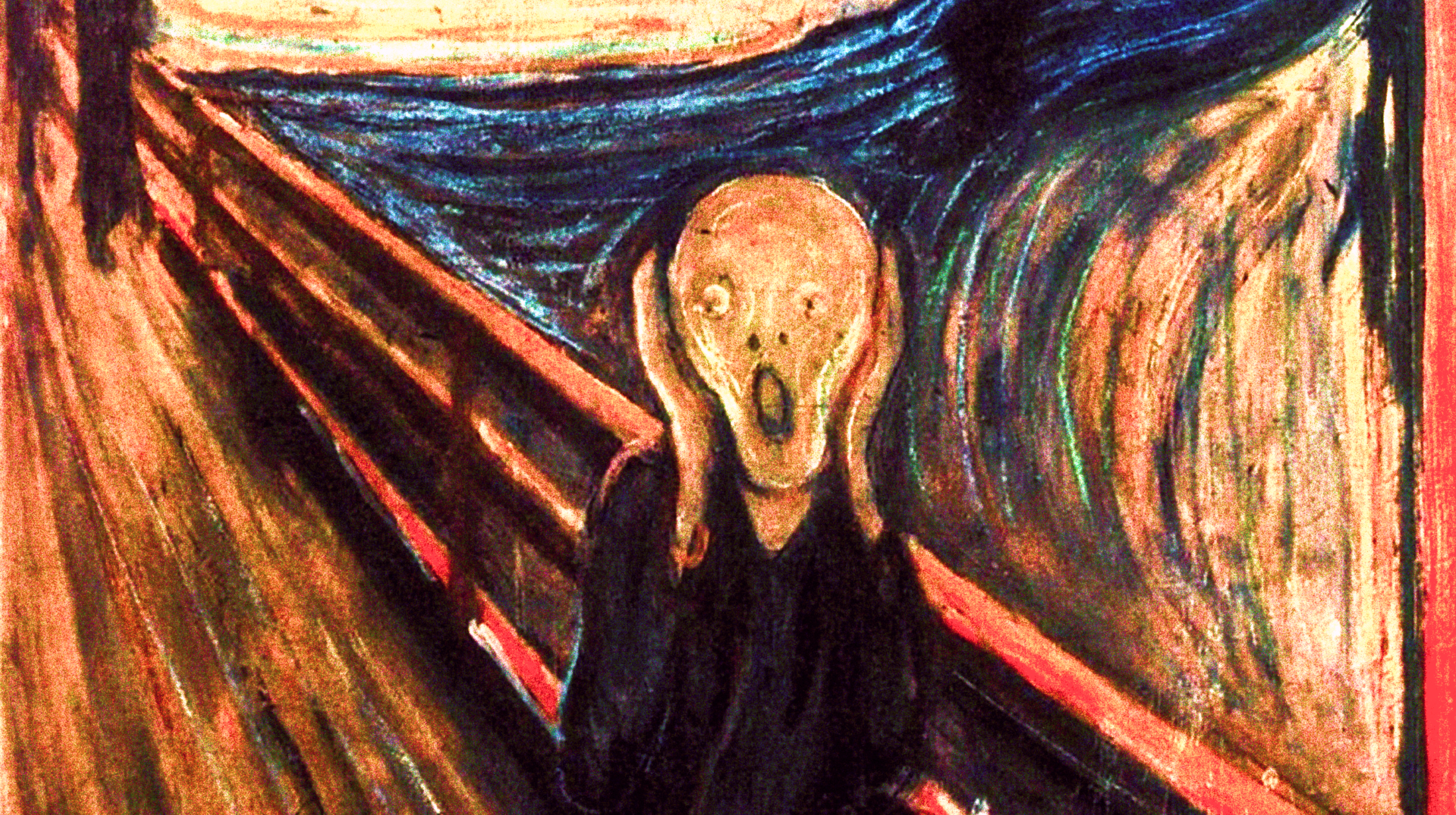Actually, neuroscience suggests “the self” is real

- The nature of consciousness and the existence of the self has been a long-standing debate in science and philosophy, with two main opposing views: the belief in a real, intrinsic self and the idea that the self is an illusion.
- Modern neuroscience suggests that the self is an informational entity that emerges from cognitive processes within the brain. This self is not material in the traditional sense but is real and detectable.
- The acknowledgment of the self has profound implications for human experience, mental health, moral reasoning, and our overall comprehension of reality.
There is a deep debate that has been going on for centuries in the world of science and philosophy, a debate that some might call a war. It revolves around the nature of consciousness and the self, and with recent advances in artificial intelligence, the topic is more relevant than ever.
The central question is: Do we really have an intrinsic, unified “self,” or is it just an illusion created by the brain? (In this article for Big Think, Chris Niebauer argues that there is no self.) Tied up with this question is another question, one that perhaps has a bit more obvious practical importance. Do we actually control our thoughts and actions, or are they just outcomes set in stone by an entirely predetermined universe?
Common wisdom says we have a self and that self is the source of our free will, but the subject of the self is riddled with paradoxes. Because the mind has been categorized as something “nonphysical,” its definition alone places the self outside of physical cause-and-effect, and beyond the scope of science. However, as with many philosophical quandaries that involve the proposal of a thesis and the emergence of a counter-thesis (or antithesis, in the words of Hegel), a synthesis often emerges, reconciling seemingly disparate views into a more coherent and sensible perspective.
Thesis: The reality of the self
The first formal argument for the existence of a self was laid out by the philosopher René Descartes in the 17th century. With his famous statement, “Cogito, ergo sum” — which roughly translates to, “I think, therefore I am” — Descartes anchored the existence of the self in the act of cognition. For him, the very act of thinking was incontrovertible proof of the existence of the self.
Armed with this proclamation, the father of modern Western philosophy laid out a theory of reality known as substance dualism. This philosophy posits that there are two distinct types of “substances” that make up existence: the mental and the physical, which correspond to the mind and the body (and the rest of the physical world). The mind controls the body through intentional thought, and it animates the material system by giving it agency, volition, and free choice.
Everyday experience seems to confirm Descartes’ thesis. We are not like inanimate objects — we are animated by our desire to pursue goals, driven by our dreams. While the behavior of a nonliving system is predictable with Newton’s laws, animal behavior is complex, adaptable, and largely unpredictable. This agency is most pronounced in humans due to our awareness of ourselves as conscious entities. Such self-awareness creates a new level of freedom in our choices, such that they are not always dictated entirely by our emotions and instincts.
But to understand this stance in isolation from the religious and cultural context of the time would be to overlook a profound piece of the puzzle. Descartes’ philosophy resonated deeply with Christian theology, because in his framework, the conscious mind is equivalent to the soul or spirit. The soul not only serves as the seat of consciousness and morality but is also believed to survive physical death. By arguing that the mind was a distinct entity from the physical body, mostly detached from the mechanistic processes of the brain, many saw Descartes’ dualism as providing a philosophical grounding for Christian beliefs about the nature of the soul.
As scientific understanding progressed, there was growing discomfort with Cartesian dualism. The Enlightenment era, with its emphasis on reason, empiricism, and skepticism of traditional authority, led to challenges not just to specific doctrines, but also to the broader intermingling of science and religion. To many thinkers of the time, the dualistic notions of an immaterial mind or soul seemed to be relics of religious dogma, which had no place in a rational, scientific worldview.
Antithesis: The self is an illusion
Early skepticism of substance dualism emerged before neuroscience and psychology were even proper fields of study, because the notion of an immaterial mind distinct from the body seemed at odds with the general mechanistic understanding of causality that existed since Newton. According to the concept known as the “causal closure” of the universe, every physical event that happens in the world is determined by prior physical events. This deterministic worldview raises the question: If every action, emotion, or thought we experience is predetermined by a set sequence of causes and effects, where is the room for an independent entity called the “self” to truly exist?
Out of this line of reasoning, philosophies that denied the existence of minds emerged known as reductionism, eliminative materialism, and illusionism. These stances suggest that what we perceive as the activity of a conscious self can be completely reduced to material processes in the brain. This line of reasoning was introduced by the philosopher David Hume centuries ago, but is championed in an empirically updated form by neuro-philosophers like Patricia Churchland, Daniel Dennett, and Keith Frankish. Instead, what exists is a bundle of transient experiences, but no core self that binds them.
However, underlying this scientific skepticism was also an ideological shift. Reductionism can be thought of as the antithesis or critique of the concepts of a premodern worldview. The rejection of the self was motivated by a hidden agenda to rid science of any ideas that remotely felt supernatural or religious. Since the self seemed intertwined with the idea of a soul, scientific pushback on ideological grounds was inevitable, and from that point on, findings from neuroscience and psychology were interpreted through a reductionist lens. The fact that scientists could not identify a localized region that precisely corresponded to the self seemed to verify the belief that it is an “illusion,” though to most people that statement has little meaning, if any.
This reductionist ideology recently found an ally in what is called “nondual” Eastern philosophy. According to this quasi-mystical doctrine, embracing the idea that we aren’t our thoughts or ego can lead to a more compassionate world — one free of self-blame and blame toward others. If none of us are in control of our actions or thoughts, then punishment is pointless and immoral. By not placing undue importance on the self, individuals might find themselves more attuned to the interconnected nature of existence, shifting toward a holistic worldview where “we’re all in this together.”
However, there’s a dark side to this denial of the self, and it’s extremely troubling to those who think about this stuff deeply. If we have no self and no control over our thoughts and actions, then we are slaves to a billiard ball universe, trapped in a nihilistic nightmare in which we cannot change our fate or the fate of humanity. For those who take the hardline reductionist stance seriously, this can lead to cognitive dissonance, and in rarer cases, crippling depression or psychosis.
Thankfully, as with many ostensibly unresolvable philosophical quandaries, a synthesis emerges, reconciling seemingly disparate views into a more unified and sensible perspective.
Synthesis: The self as an informational entity
While the self might not be a material entity that you can hold in your hand, there’s a growing mountain of empirical evidence suggesting it is a very real phenomenon with a measurable physical correlate that emerges from the intricate dance of cognitive processes within the brain. New cutting-edge theories of consciousness like Global Workspace Theory, Integrated World Modeling Theory, and the Inner Screen Hypothesis are reviving the idea of a Cartesian theater of experience that is viewed by a subject with control and causal power.
Douglas Hofstadter, cognitive scientist and author of the Pulitzer Prize-winning book Gödel, Escher, Bach: An Eternal Golden Braid (1979), argues that the self emerges in those systems that have the capacity to represent or model the world and themselves. This creates a self-referential feedback loop whereby cognition reflects upon itself, producing a nexus of experience and control. Processes like recurrent feedback loops lay the foundation for the emergence of consciousness and, by extension, the sense of a personal self.
In the decades since that idea was proposed, modern neuroscience and psychology have provided neuroanatomical and behavioral support for the loop hypothesis. Research investigating the brain networks known as the cortical midline structures (CMS) and the default mode network (DMN) is providing insights into how the self may emerge from self-modeling processes in the brain. Self-modeling refers to when the brain, which naturally constructs a mental model of the world, models itself as an agent with a mind. The DMN includes the CMS, so they can be thought of as part of the same core computational module, though the networks are associated with subtly different functions. They both consist of well-studied brain regions like the medial prefrontal cortex and the posterior and anterior cingulate cortex.
The cortical midline structures are consistently active during tasks related to self-awareness and introspection. The DMN is a network of brain regions that exhibit increased activity when the mind is engaged in internally directed processes, such as daydreaming, self-reflection, and contemplating the future. These processes involve the continuous integration and updating of information about one’s physical body, personal history, and emotional states, leading to the construction of a dynamic and subjective sense of self. A plethora of peer-reviewed studies have linked this network to self-awareness and self-related thought. We can now actually see the neural attractors of electrical activity that correspond to these conscious and self-reflective states, so the physical structure of the informational entity we call the self is coming to be known in detail.
In weaving together these threads, a new understanding of the nature of the mind emerges. The self, while not a material entity in the traditional sense of the word, is both real and detectable. Taking psychedelics can temporarily dissolve this structure, creating an ecstatic sense of interconnection with the external world, but at the same time proving that the structure exists. If the sense of self can dissolve and subsequently reappear, it underscores its existence — the very fact that it can waver and return implies a certain tangibility.
The self is real
The argument for the existence of the self is not just rooted in common sense and everyday experience, it is also supported by the latest research and theories in cognitive neuroscience. Whether it’s the introspective exercises of meditation and creative imagination, or the mappings of the neural correlates of consciousness and cognitive control, the self finds affirmation at every turn. A robust sense of self is crucial for ideal human experience, as it can have significant effects on mental health and moral reasoning. It allows individuals to make sense of the world, take responsibility, make value-based decisions, and connect meaningfully with others.
From this new synthesis, we see that the debate over the existence of the self isn’t just a pointless game of philosophical ping-pong. It has profound implications for our understanding of ourselves, morality, and the very fabric of reality.





